The wild ones: Kakadu and Royal national park
Happy birthday to Australia’s biggest and oldest national parks.
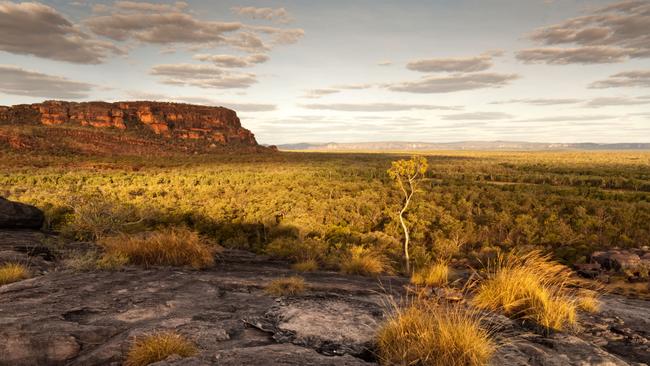
It’s summer in the Top End, and all I can see from my rocky perch atop the sandstone escarpment of Ubirr in Kakadu National Park is a sea of green, a vast wetland fanning out towards the horizon in all directions. A fat black and white magpie goose flaps between the treetops below but otherwise the only things moving in the soupy heat are a few buffalo and a couple of black wallaroos lazily hopping between patches of shade. It may be one of Kakadu’s most popular spots but we have the place to ourselves.
We’ve had to ride a flat-bottomed boat along the flooded road to get here, weaving between spiky pandanus and peeling paperbark trees, vaguely following the white lines on the submerged bitumen below as sea eagles ride the thermals above. It’s an ethereally beautiful journey, a highlight of my time in the park, and one you can do only in big wet seasons when water levels are high enough.
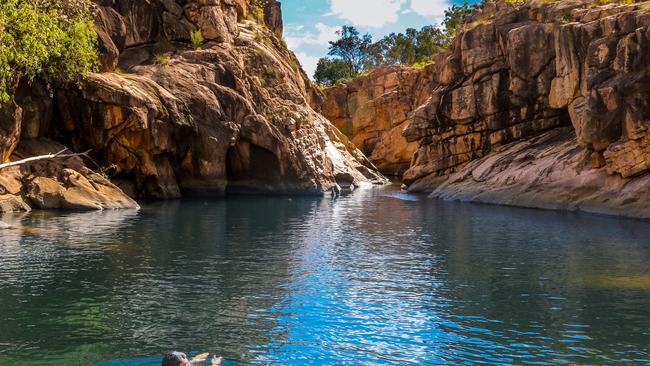
This has been home to the Bininj and Mungguy people for more than 65,000 years, possibly longer. In 1979, Kakadu National Park, Australia’s largest land-based national park, was established with the intent to “recognise Aboriginal people’s land interests while providing for conservation management of the land”. In April, Kakadu celebrates its 40th year. In the same month, the nation’s oldest national park, Royal National Park in NSW, turns 140. It’s a big year for two precious jewels in our national heritage crown.
Kakadu has been jointly managed by the traditional owners and Parks Australia since its formation, and was inscribed on the World Heritage List for its natural and cultural values in 1981. But it wasn’t until the release of hit movie Crocodile Dundee in 1986, which was filmed in various locations across the park, that it captured the imagination of the travelling public. “Kakadu became a worldwide tourism destination almost overnight,” says Rick Allert, chair of Kakadu Tourism. At its peak it attracted more than 300,000 visitors a year, about half of them from overseas.
At the time there were next-to-no tourist facilities. The iconic crocodile-shaped hotel didn’t open until 1988 and almost all roads in the park were rough 4WD tracks built to service the Ranger uranium mine, which still operates in a northeast pocket surrounded by parkland. Even famous spots such as the infinity-edged plunge pool at the top of Gunlom Falls, now one of the park’s most visited spots but then called UDP (Uranium Development Project) Falls, were virtually unknown to outsiders.
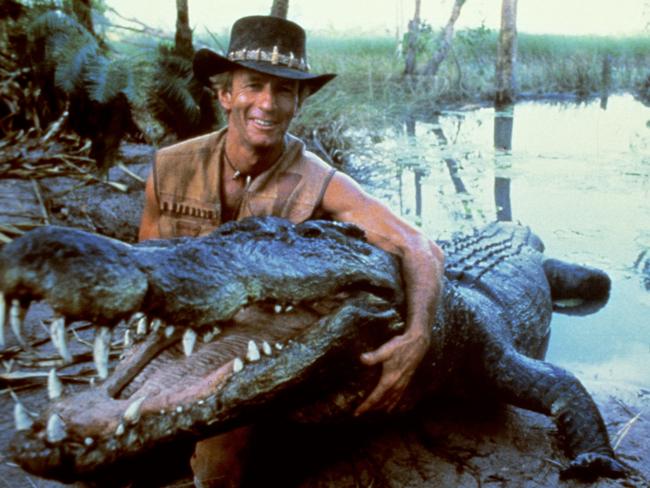
Forty years later, despite the sealed roads, airconditioned hotels and licensed restaurants, Kakadu remains a wild at heart place where more than 10,000 saltwater crocodiles cruise the waterways, hiking trails lead to bird-filled billabongs and deserted swimming holes where freshwater turtles nibble your toes, and dazzling rock art galleries remind you this is home to the oldest living culture in the world. Beyond the tourist hubs of Cooinda and Jabiru are dozens of remote campgrounds, and you never know what kind of adventure is lurking at the end of a bumpy track.
Although access to Kakadu is open all year via sealed roads, getting around can be impossible in the summer months when floods swamp trails and campgrounds. But there is still plenty to see and do at this time of year, known as the green season. Take a breathtaking doors-off helicopter flight over the thundering waterfalls that run only after rain. Cruise the lily-covered floodplains of Yellow Water billabong and into beautiful backwaters that are grasslands in the dry. Linger as long as you like at the vibrant depictions of creation ancestors at the extraordinary Nourlangie rock art galleries without distracting chatter from tour groups.
And there are other advantages such as half-price rooms, one-on-one free basket-weaving workshops at the cultural centre and the wonderful sight of woodlands transformed into gardens with scarlet grevilleas and other wildflowers in bloom. The spectre of rain and road closures, however, keeps the backpackers, grey nomads and tourist buses away.
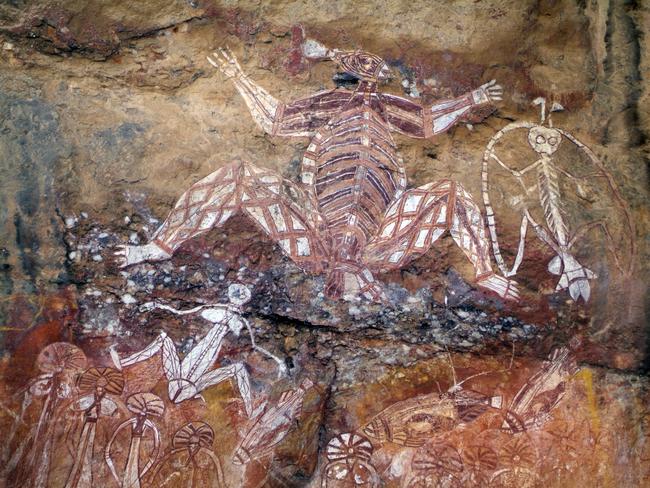
All that could be about to change though, with announcements earlier this year from both sides of politics pledging more than $210 million in funding for Kakadu. If all goes to plan, it will revitalise Australia’s largest national park no matter who wins the federal election.
Allert says he welcomes the recognition that significant upgrades to roads and infrastructure are needed “to ensure Kakadu becomes more of an all-year destination”. He also sees much to be gained from developing the town of Jabiru, population 1100, which was originally built to house mine workers. High on his list would be a makeover for Jabiru airport and starting direct flights from Darwin. “This would encourage more time-poor, higher-yielding visitors to come to the region. We are beginning to see more Asian visitors experience Kakadu, and to tap into this market, good access is crucial,” he says.
A masterplan for Jabiru released in the middle of last year by the Gundjeihmi Aboriginal Corporation, which represents the traditional owners, includes a crocodile-free artificial lake for year-round swimming, a five-star luxury lodge with day spa, yoga studio and high-end dining options, glamping, a World Heritage Interpretive Centre, community centre, education precinct, medical centre and mobile phone connectivity.

Kakadu is an entirely different type of wilderness experience from the one you’ll find in Australia’s oldest national park on the southern outskirts of Sydney. National Park, as it was simply called when it was established in 1879, was considered the “lungs” of Sydney, a place where city-dwellers could enjoy the great outdoors. Back then, it was all about recreation rather than conservation, with native vegetation cleared for lawns and pleasure gardens, the construction of dance halls, mass plantings of ornamental trees, and exotic animals — deer, rabbits and foxes — introduced for sport.
It was renamed Royal National Park in 1955 to commemorate a tour by Queen Elizabeth II, although the closest she got was giving it a glance from a window of the royal train en route to Wollongong. Locals just call it “the Nasho”.
Now, 140 years later, the 160sq km expanse of coastal bushland an hour’s drive from the city centre is one of the most visited national parks in NSW, clocking up more than 3.2 million visits a year. It’s the place to go for riverside picnics and cliff-top lookouts, freshwater lagoons, coastal walking tracks and forest cycling trails, scenic drives, rainforest, beaches, waterfalls and Aboriginal rock engravings of whales and other animals. Hire a row boat, canoe or kayak at the historic Audley Boatshed (established in 1893), surf at one of the patrolled beaches — the first surf clubs were established in 1938 — kayak, see whales in winter and wildflowers in spring, catch a fish, have a barbecue or lunch at the cafe in the old Audley Dance Hall overlooking the Hacking River. Take a look at the much-Instagrammed Figure Eight Pools but be careful; park authorities increasingly urge visitors to steer clear of this dangerous rock shelf.
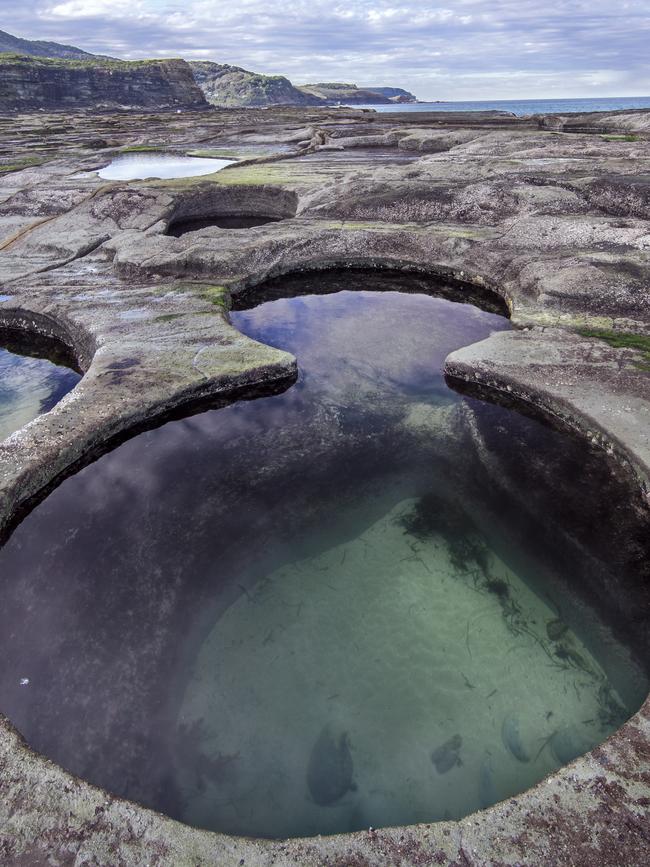
You can camp or stay in one of three heritage cabins, but apart from those walking the two-day 26km Coast Track, which winds its way along the coastal edge of the park between Bundeena and Otford, the majority of visitors are day-trippers. On sunny summer Sundays places such as Wattamolla picnic area, which features a waterfall, lagoon and an ocean beach, is so popular park management is considering implementing an online booking system for carparking spots to help manage the more than 4000 people who may turn up.
Overcrowding is definitely not an issue in Kakadu, even in the more popular dry season. Visitor numbers have dwindled since the heady post-Dundee days of the 1980s — about 200,000 in 2018, 100,000 fewer than at its peak.
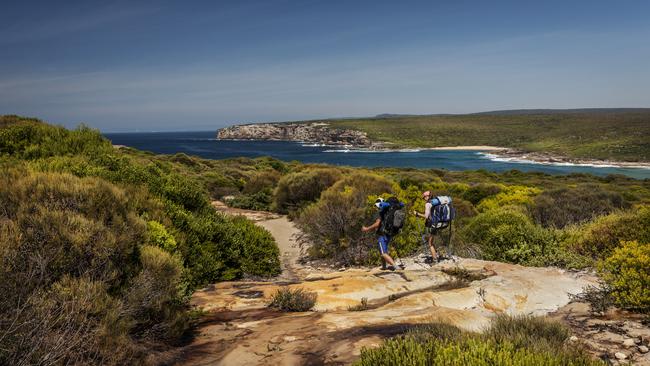
Watching the sunset from the top of Nawurlandja Lookout, a rocky outcrop overlooking the sandstone escarpment of Nourlangie, and one of those spots only the locals seem to know about, it’s hard to imagine Kakadu ever being crowded. At 20,000sq km, it’s vast.
But 33 years after Crocodile Dundee first showcased the billabongs, crocodiles and extraordinary landscapes to the world, two new major movies are due to do it all again. High Ground, a frontier action-thriller starring Simon Baker, Jack Thompson and a cast of indigenous locals, and Top End Wedding, a romantic comedy starring Miranda Tapsell (The Sapphires) and British actor Gwilym Lee (Bohemian Rhapsody) that premiered at this year’s Sundance Film Festival, were both filmed in and around Kakadu. If you like your wilderness wild and lonely, maybe you should go now, before the crowds return.
-
IN THE KNOW
Royal National Park is 32km south of Sydney, via the Princes Highway. You can also take a ferry from Cronulla to Bundeena.
Kakadu National Park is about a three-hour drive from Darwin and/or Katherine. A highlight of the 40th anniversary celebrations will be indigenous food festival, A Taste of Kakadu, May 10-19.
■ parksaustralia.gov.au/kakadu;
Wet season cultural cruises to Ubirr;
-
MORE TO THE STORY
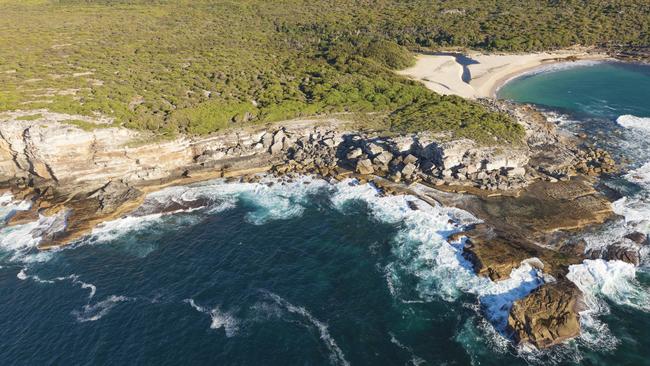
Sydney’s Royal National Park is the world’s second oldest national park. The first was Yellowstone in the US, home of the famous Old Faithful geyser. It was established just seven years earlier in 1872 under the orders of president Ulysses S. Grant. It wasn’t America’s first nature park though; that honour goes to Yosemite, which was preserved by Abraham Lincoln as a state park in 1864.
Australia’s second-oldest national park, Belair in the Adelaide Hills, was established in 1892, followed by Ku-ring-gai Chase NP at the entrance of the Hawkesbury River on the northern outskirts of Sydney in 1894, Wilson’s Promontory and Mount Buffalo, both in Victoria, and John Forrest Conservation Park near Perth, all in 1898. Ten years later Witches Falls, now part of Tamborine NP in the Gold Coast hinterland, became Queensland’s first national park.
In Tasmania, Freycinet and Mt Field were both declared national parks in 1916, although Russell Falls, the centrepiece of Mt Field, became Tasmania’s first nature reserve in 1885. Ayers Rock NP (now Uluru-Kata Tjuta NP) was declared in 1950, the first in the Northern Territory.
Fast forward almost 70 years and Australia now has more than 500 national parks, including 12 World Heritage-listed wilderness areas. Our newest national parks, Bromley (Ampulin) and Bromley (Kungkaychi) in the Cape York Peninsula Aboriginal Land, were dedicated in May 2017 and are jointly managed by the traditional owners.

To join the conversation, please log in. Don't have an account? Register
Join the conversation, you are commenting as Logout